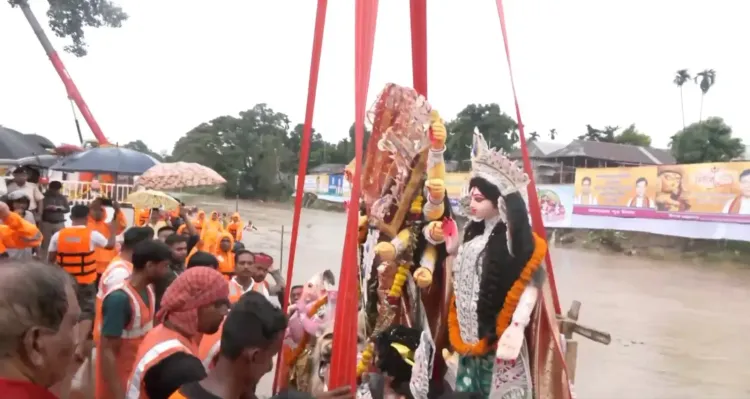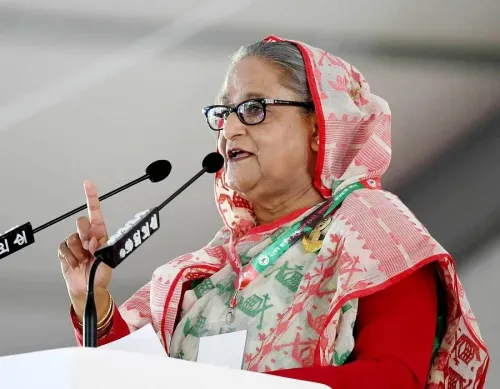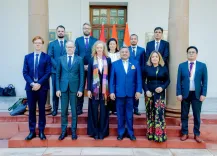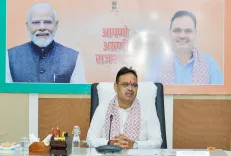Why Did Devotees Across the Northeast Bid Farewell to Goddess Durga?

Synopsis
Key Takeaways
- Durga Puja is celebrated with great enthusiasm across Northeast India.
- Vijaya Dashami marks the conclusion of the festival with idol immersions.
- Security measures were heightened to ensure peaceful celebrations.
- Traditional rituals like 'Sindoor Khela' enhance the cultural experience.
- Support for Durga Puja reflects the commitment to preserving cultural heritage.
Agartala/Guwahati, Oct 2 (NationPress) The vibrant Durga Puja festival, celebrated with great enthusiasm in Tripura and various Northeastern states, has concluded as per the religious calendar on Thursday with the commencement of idol immersion during Vijaya Dashami.
Chief Ministers and prominent political figures actively engaged in visiting pandals and taking part in numerous rituals associated with Durga Puja. To ensure a safe celebration, security measures were intensified and multiple strategies were implemented to maintain peace during the festivities.
While Dussehra is also observed separately by various communities, Tripura police reported that only 18 percent of the 3,000 idols were immersed on Thursday. Devotees, including men, women, and children, expressed their heartfelt farewells to Goddess Durga and her offspring as the major annual Hindu festival drew to a close.
In a poignant atmosphere prior to the immersions, married women of all ages across the Northeastern states paid tribute to Goddess Durga with offerings of vermillion, betel leaves, and sweets on the auspicious occasion of ‘Vijaya Dashami’.
During the 'Sindoor Khela', married women adorned the goddess with sindoor and shared sweets, followed by applying sindoor on one another’s faces.
In Guwahati, before some idols were immersed in the Brahmaputra and other significant rivers of Assam, vibrant immersion processions paraded through various towns. Though few idols were immersed on Thursday across Assam, Tripura, and other Northeastern states, most are expected to be immersed over the next two to three days.
Puja pandals throughout the Northeastern region featured traditional themes, current issues, and events as central decorations. Historical events were prominently highlighted in these themes.
In Agartala, adhering to tradition, the idols from the Durgabari temple led the Dashami procession and were the first to be immersed at Dashamighat with full state honors, accompanied by the state police band playing the national anthem.
The 149-year-old Durga Puja at the Durgabari temple, initiated by the former kings and supported by the Tripura government for over seventy-five years, continues to attract devotees from various parts of India and neighboring countries, including Bangladesh.
Since merging with the Indian Union 76 years ago in October 1949, Tripura has been unique in that it remains the only state where the government continues to support the 149-year-old Durga Puja, closely monitored by both the former royal family and the West Tripura District administration.
The merger agreement mandated the Tripura government to continue funding temples operated by Hindu princely rulers, a commitment that persists even 78 years post-India’s Independence.
While festivities were organized in a more subdued manner due to ethnic violence in Manipur, Durga Puja is also celebrated, albeit in smaller numbers, in Meghalaya, Nagaland, and Mizoram, regions predominantly inhabited by the Christian community.
Given the unrest in Bangladesh, vigilance along the India-Bangladesh border with Assam and Tripura has been heightened. State authorities have instructed the Border Security Forces (BSF) to maintain strict surveillance along the international border to prevent any infiltration or cross-border movement of potential threats.









